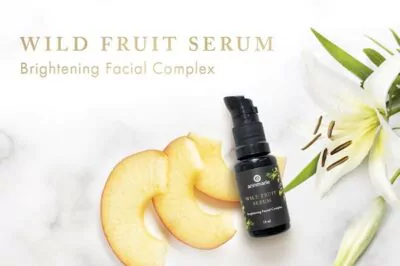One of my favorite things is when we get a help desk request so interesting that it inspires an article. It means that you’re interested in what we’re doing, and it means I get to spend time researching and writing about something interesting. Win win!
Lately we have been seeing questions about something we added to our Anti-Aging Eye Cream — plant cell cultures. We’re really excited about using them in our skin care and wanted to take some time to give you the what, how, and why about them.
What are plant cell cultures?
Plant cell cultures are living plant cells grown in a lab. They originate from living plants, typically grown in natural conditions. Scientists take scrapings of a living mother plant, locate the specific cells that they want to duplicate, and create the perfect environment for those types of cells to grow in their culture. For the cells to grow effectively, the cultures need the exact vitamins, nutrients, and hormone content that exists in the growing plant form.
The exact living circumstances are carefully recreated in an aqueous solution, then the plant cells are taken from the mother plant and placed in the solution to multiply. Once they have multiplied enough, they are removed from the solution and suspended in their active state.
We use these living plant cells in our skin care, but this budding science can be also used to grow plants in a lab that can eventually be planted in soil and cared for as any other plant would be. This method is currently being studied and used in a lot of industries including agriculture for year-round vegetable growth and pharmacy for understanding the synergistic qualities of plant constituents.

The difference between plant cell cultures and stem cells
Stem cells are undifferentiated cells that can produce any type of bodily cell. They exist in all living things and although they are a bit controversial, stem cells have been used to achieve some great scientific achievements.
Animal stem cells are the type of stems cells that we hear about in the media. The stem cells that can be used to grow completely new organs for animals are controversial because they only exist in the very beginning stages of life. Once members of the animal kingdom are fully-formed beings, we aren’t making stem cells.
We do have undifferentiated cells, which is how we can heal our stomach lining when it gets damaged. But we can’t use these cells to grow new limbs or organs.
Plants on the other hand, continually grow new stem cells throughout their lifetimes. A plant’s extra store of the stem cells is why they are able to grow new leaves in the spring and how they continue to sprout new life and be a mature entity at the same time. We use these stem cells in our Citrus Stem Cell Serum to help give your skin a refreshed and radiant look. You can read all about that here.
The difference between the cultured plant cells and stem cells is a big one. Stem cells start as a blank slate. Plant cell cultures come with the properties of the plant they were grown from. In skin care, we use them to provide potent, specific benefits.
Why are plant cells amazing for your skin?
Using active plant cells allows us to increase the potency of our skin care—not only do the plant cells themselves carry potent benefits from their mother plant, but they also serve to activate the other ingredients in the product.
Using active plant cells grown from a mother cell also allows us to harness these plants’ benefits, regardless of the season or availability. We are thus able to include a good amount in each product without posing threat to these precious plants.
We use a total of 150 million active plant cells per small batch of our Anti-Aging Eye Cream. These plant cells come from three different plants, each with their own unique benefits:
Damas Rose cells – This extract is particularly useful for reducing the appearance of crow’s feet.
Sweet Iris cells help firm and tighten. It’s perfect for your eye area, because it helps decrease the appearance of wrinkles and keep the skin firm and smooth.
Larch Tree cells give the skin a boost of energy. The larch cells help maintain a soft, bright, and youthful look around your eyes.
Now you see why we’re so excited about this technology! We’re able to take cells that have these awesome benefits and add them to our already pure, active Eye Cream for a product that we think is out of this world!
Have you tried our new Anti-Aging Eye Cream formula? Let us know how you like it in the comments below!
Sources:
Naolys – Anti-Aging
Biology Reference – Meristems
Nature Reviews – Plant and Animal Stem Cells: Similar Yet Different
The Science Creative Quarterly – Your Guide to Plant Cell Culture
Naolys – The Familiar Ones








Leave a Reply